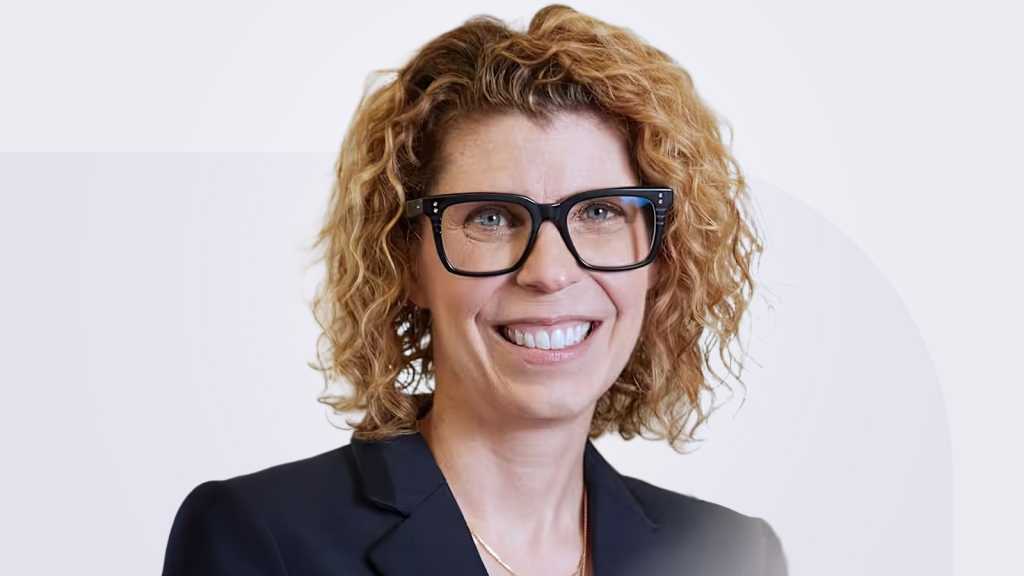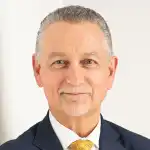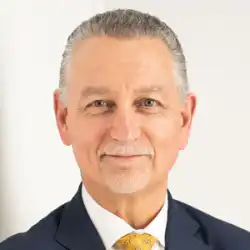The global professional services firm helps its clients navigate a wide array of risks, thanks to a five-tier integrated architecture built on a rock-solid data foundation.

As the global chief operating officer of Aon, Mindy Simon leads operations, IT, data-driven capabilities, and service delivery to enable the firm’s 60,000 colleagues to serve clients across 120 countries around the world. With a career spanning finance, global business services, and technology, she has become known for her ability to bridge the worlds of business and technology and to design organizations that not only launch but can sustain transformation.
On a recent episode of the Tech Whisperers podcast, Simon and I explored how she combines a people-first mindset with a business-focused approach to transformation to deliver measurable outcomes for Aon and its clients. Afterwards, we spent some time digging deeper into Aon’s data journey.
What follows is our conversation, edited for length and clarity, with insights from Simon on why better data matters, what it means for business enablement and margin impact, and how her data journey can serve as a blueprint for moving from “not yet” to “better.”
Dan Roberts: In your Investor Day presentation, you talked about data being the foundation, and boldly stated, ‘We have better data.’ What gives you the confidence to make such a statement in a world where so many organizations still struggle to get their data house in order?
Mindy Simon: Our No. 1 advantage is our one-firm, Aon United structure, which enables our colleagues to serve clients without organizational boundaries. As a result of this Aon United approach, when you look at what we have for data assets — respectful of data privacy and data residency requirements within various regions and countries — we can offer boundaryless data that isn’t restricted by structure or by internal barriers, which can be significant.
The second is our bespoke data assets, where we have capabilities and the ability to look across data sets, whether they be related to risk capital (commercial risk and reinsurance) or human capital (health, wealth, talent), to drive correlations and insights that organizations haven’t been able to see before.
On the podcast you referred to your global integrated architecture, which has five tiers: data, analytics, broking and advisory, and services. Can you share what those encompass and how the architecture is creating differentiation for Aon?
Data is the foundation, and AI sits below that, feeding off the data foundation. Next is analytics, which we break into three areas: analyzers, which are forward-looking; benchmarks, which help clients compare themselves to others, both within industry and across industry; and diagnostics, which help to isolate problems and make recommendations on how to improve results.
That then feeds into what we call broking and advisory. We have two phenomenal platforms in broking that have been developed over the last decade, one servicing risk capital and one servicing human capital. Those enable our firm to do that data consolidation as we look at risk transfer models and taking risk to market and to work with insurers to bring capabilities back to our clients.
Advisory then sits sometimes on top of broking, but it also can be served by what we call data-led advisory, where we’re helping consult and provide advice to our clients, leveraging the great capabilities and expertise of our colleagues.
On top of that, we have service, which encapsulates the end-to-end experience for our clients across the client journey, 365 days of the year — from data ingestion, to where they can find their invoice, to how they can receive a certificate of insurance. That end-to-end architecture enables our firm to optimize the technology. It also enables Aon to optimize and capture the data such that you then have a virtuous circle of the data that is being captured throughout the journey that then helps feed the analytics, the broking and advisory, and the service.
One of the messages at Aon’s Investor Day was ‘Do more, win more, keep clients longer.’ Can you share examples of how your analytics and innovative solutions are driving measurable growth and retention?
Data and analytics enables our brokers, who are partnering with risk managers and global benefits owners, and our advisors, who are providing advice across a myriad of things, including compensation benchmarks, pension risk transfer, reinsurance levers, and market dynamics.
As you look at our capabilities, our clients ask our firm to help them make database decisions, for their individual roles, whether they’re within a human capital organization or they’re a business risk manager, and also within their organizations around how to better understand the decisions they’re making, whether they report into a chief people officer or treasurer or CFO.
Ultimately, much of this aggregates into enterprise risk and goes to a board of directors. The analytics enable the decision with facts. The analytics also enable the explanation of the options, things like risk transfer versus risk retention, but it also enables our clients to tell the story of the outcomes that they’re driving up through their leadership all the way, in many cases, to their board of directors. That is a key element and capability that our colleagues use with our clients every day.
Can you share any examples of business outcomes where you see your data strategy making a significant impact?
One of the great examples enabled by our Aon United structure and investments in integrated risk capital and human capital capabilities is how we’ve leveraging our reinsurance analytics with our commercial risk clients. With each one of the analyzers that we launched over the course of the last 15 months — property, casualty, cyber, D&O, and risk financing — you can see the impact in their decision-making, their direct feedback to our team, and also in our win rates and RFPs.
Leaders often feel pressure to act quickly, but you’ve shown real discipline in knowing when to wait and when to move. Can you talk about how you decide when it’s game time to initiate and sustain big transformation initiatives?
Sometimes you don’t get to choose; the market or the environment or client need chooses for you. But what I think is important is knowing when it’s a choice and when it’s not a choice and knowing when you go and when you need to maybe take a step back to get ready to go.
Sometimes you get lured into ‘forward movement is good movement’ when you don’t necessarily know the destination you’re going toward. What’s more important is having the confidence to take a step back, take a deep breath, assess where you’re going, get alignment on that destination, and the pace of the journey: Is it something that we can do over time? Is it something where we’re behind and we need to catch up? Is it something where, given increased volatility, it is critical in our service to our clients to move faster?
That why, if you will, then helps you set that roadmap and not just move for movement’s sake, which can waste a ton of energy. Yes, you want to always be in perpetual motion, but you want to be in perpetual motion going in a strategic direction.
You closed your remarks at Investor Day by saying, ‘And we’re just getting started, so the opportunity for future impact is significant and exciting.’ What’s the next chapter in helping Aon win through better data?
One of the things we say is, ‘Colleagues plus capabilities equal better decisions for our clients.’ We have phenomenal colleagues that we’re partnering with to develop the capabilities to serve our clients. With AI and other technology advancements, the capability of increasing that impact to better predict things that didn’t used to be predictable, to capture data that historically wasn’t able to be captured, or even to just process it faster because of the level of computing that exists.
The opportunity is in focusing on the problems and the challenges that our clients are seeing and then developing capabilities to serve them distinctively. That ensures it will be high impact, because the client need is real. And when combined with the deep domain expertise of our colleagues, we can deliver tremendous results for our clients.
So many companies have AI as a big part of their agenda, but they aren’t AI ready due to a data problem or a workforce readiness problem. Can you talk about your AI strategy and approach?
No different than your tech strategy or digital strategy, your AI strategy needs to serve your business strategy. I think people get caught up in the tech versus business enablement argument. What we’ve tried to focus on is, first, a common understanding. This is that 30% digital fluency across our firm that enables our colleagues to not be intimidated by AI, to not be fearful, to not ignore it, but to come to a common foundation of understanding of what it can do and what it can’t do.
We laugh that it’s not magic; it’s actually math, right? You can see it. It’s computing; it’s data; and it’s about understanding how the computing and the data are coming together. That’s highly empowering and engaging for our colleagues.
Because we serve clients every day, we have the privilege of seeing this through our clients’ eyes as well. That enables us to not only learn from our clients but share with them what we’re doing. Then it comes back to how do we apply it to better serve clients, which then looks at what are the problems that our clients are facing, and then how do we use AI to better manage the volatility they’re facing or optimize with the increasing cost of health benefits. Where are there influences that are driving those health outcomes, and how can we help to better manage those influences to get to better outcomes for their businesses and their workforces?
Climate modeling is another example. If you choose to have facilities in certain locations, what can you do to better prepare for the increasing volatility within weather and climate? AI in the workforce is a huge one in terms of how you look at roles and how roles will change in the future. How do you prepare yourself for that change?
I think all those components come from a foundation of, if you can first understand what the capability is, you then can understand how that capability can impact our firm, in terms of how Aon operates, but more importantly, how we serve our clients.
For more insights from Mindy Simon’s leadership playbook, tune in to the Tech Whisperers.
See also:










